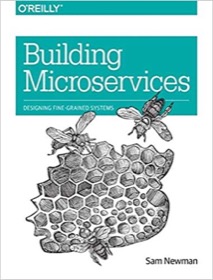| A Microservices Bestseller! | |

|
Building Microservices |
Java/Scala memory FAQ: How do I control the amount of memory my Java program uses (i.e., how to control Java RAM usage)?
Java memory control: Short answer
The short answer is that you use these java command-line parameters to help control the memory (RAM) use of your application:
- Use
-Xmxto specify the maximum heap size - Use
-Xmsto specify the initial Java heap size - Use
-Xssto set the Java thread stack size
For example, use this syntax to specify the amount of memory the JVM should use:
-Xms64m or -Xms64M // 64 megabytes (initial memory) -Xmx1g or -Xmx1G // 1 gigabyte (maximum memory)
A complete java command looks like this:
java -Xmx64m -Xmx2G -classpath ".:${THE_CLASSPATH}" ${PROGRAM_NAME}
See the rest of this article for more details. Also see my Java heap and stack definitions if you’re not comfortable with those terms.
Java RAM: The longer answer
As a bit of background, I’m running a Java application on a Raspberry Pi device where memory is limited. Unfortunately, every time I try to run the program I get this Java heap size error message:
“Error occurred during initialization of VM. Could not reserve enough space for object heap. Could not create the Java virtual machine.”
I knew my program doesn’t need a lot of memory — it was just hitting a database and generating some files and reports — so I got around this memory limit problem by specifying the maximum Java heap size my program was allowed to allocate. In my case I didn’t think about it too hard and just chose a heap size limit of 64 MB RAM, and after I set this RAM limit my program ran fine.
Setting the maximum Java heap size (Xmx)
You set the maximum Java heap size of your program using the -Xmx option to the Java interpreter. To specifically limit your heap size to 64 MB the option should be specified like this:
-Xmx64m
Using that memory limit setting, the Java command I use in my shell script to start my Java program looks like this:
java -Xmx64m -classpath ".:${THE_CLASSPATH}" ${PROGRAM_NAME}
where THE_CLASSPATH and PROGRAM_NAME are variables set earlier in my script. (The important part here is the -Xmx64m portion of the command.)
| New York Times Bestseller! | |

|
TED Talks: The Official Guide |
More Java memory-related command line arguments
You can find more options for controlling Java application memory use by looking at the output of the java -X command. Here's what the output of those commands looks like from my JVM:
$ java -X -Xmixed mixed mode execution (default) -Xint interpreted mode execution only -Xbootclasspath:set search path for bootstrap classes and resources -Xbootclasspath/a: append to end of bootstrap class path -Xbootclasspath/p: prepend in front of bootstrap class path -Xnoclassgc disable class garbage collection -Xloggc: log GC status to a file with time stamps -Xbatch disable background compilation -Xms set initial Java heap size -Xmx set maximum Java heap size -Xss set java thread stack size -Xprof output cpu profiling data -Xfuture enable strictest checks, anticipating future default -Xrs reduce use of OS signals by Java/VM (see documentation) -Xdock:name= override default application name displayed in dock -Xdock:icon= override default icon displayed in dock -Xcheck:jni perform additional checks for JNI functions -Xshare:off do not attempt to use shared class data -Xshare:auto use shared class data if possible (default) -Xshare:on require using shared class data, otherwise fail. The -X options are non-standard and subject to change without notice.
From that list, the command-line arguments specifically related to Java application memory use are:
-Xnoclassgc disable class garbage collection -Xmsset initial Java heap size -Xmx set maximum Java heap size -Xss set java thread stack size
Java heap size descriptions (xms, xmx, xmn)
Digging around, I just found this additional Java xms, xmx, and xmn information on Apple's web site:
-Xms size in bytes Sets the initial size of the Java heap. The default size is 2097152 (2MB). The values must be a multiple of, and greater than, 1024 bytes (1KB). (The -server flag increases the default size to 32M.) -Xmn size in bytes Sets the initial Java heap size for the Eden generation. The default value is 640K. (The -server flag increases the default size to 2M.) -Xmx size in bytes Sets the maximum size to which the Java heap can grow. The default size is 64M. (The -server flag increases the default size to 128M.) The maximum heap limit is about 2 GB (2048MB).
| this post is sponsored by my books: | |||
 #1 New Release |
 FP Best Seller |
 Learn Scala 3 |
 Learn FP Fast |
Java memory arguments (xms, xmx, xmn) formatting (MB, GB)
When setting the Java heap size, you should specify your memory argument using one of the letters “m” or “M” for MB, or “g” or “G” for GB. Your setting won’t work if you specify “MB” or “GB.” Valid arguments look like this:
-Xms64mor-Xms64M-Xmx1gor-Xmx1G- Can also use
2048MBto specify 2GB
Also, make sure you just use whole numbers when specifying your arguments. Using -Xmx512m is a valid option, but -Xmx0.5g will cause an error.